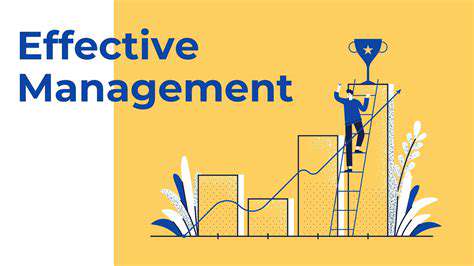What is Muscle Tension?

Understanding the Causes of Muscle Tension
Muscle tension can arise from a variety of factors, including physical strain, emotional stress, and poor posture. Identifying the root cause is essential for effective treatment. For instance, repetitive movements or prolonged sitting can lead to tension in specific muscle groups.
Additionally, mental stress is often a significant contributor to muscle tension, with anxiety and tension manifesting physically. Practicing relaxation techniques can significantly reduce this form of tension.
Symptoms and Signs of Muscle Strain
People experiencing muscle strain may notice symptoms such as pain, stiffness, and muscle spasms. It is common for discomfort to increase during movement or when trying to stretch the affected area.
In some cases, muscle strain can cause swelling or bruising, making it essential to monitor these symptoms closely. Early identification and treatment can prevent more serious injuries from occurring.
Causes of Muscle Strain
Overuse and Repetitive Motions
One of the most common causes of muscle strain is overuse, where muscles are engaged in excessive or repetitive activities without sufficient rest. This can lead to fatigue and micro-tears in muscle fibers. Athletes, factory workers, and individuals with jobs requiring repetitive motions are particularly at risk for strains due to consistently stressing the same muscle groups.
To mitigate this risk, it is crucial to incorporate rest periods and vary physical activity. Stretching and strengthening exercises can also help prepare the muscles for strenuous activity, making them more resilient to strain over time.
Inadequate Warm-Up and Flexibility
Failing to warm up properly before physical activity can significantly increase the likelihood of muscle strain. A proper warm-up prepares the muscles for the stress of exercise by increasing blood flow and flexibility. Cold, tight muscles are more susceptible to injury when subjected to sudden demands.
Incorporating dynamic stretching into pre-exercise routines can enhance flexibility and range of motion, while static stretching can be beneficial post-activity to aid in recovery. Ensuring that the muscles are adequately prepared can prevent strains and other injuries during workouts or sports.
Poor Posture and Body Mechanics
Poor posture and improper body mechanics during daily activities can lead to muscle strain over time. Whether sitting at a desk, lifting heavy objects incorrectly, or engaging in sports with bad form, these habits put undue stress on muscles, leading to discomfort and potential injury.
Being mindful of body mechanics is essential for injury prevention. This includes using ergonomic chairs, maintaining good posture when standing or sitting, and using proper lifting techniques. Regular training on body mechanics can be a valuable tool in reducing the risk of muscle strain in various activities.
Medical Conditions and Muscle Weakness
Certain medical conditions can predispose individuals to muscle strain, especially those that affect muscle strength, flexibility, or coordination. Conditions such as arthritis, neurological disorders, or previously sustained injuries can make muscles more vulnerable to strain due to underlying weaknesses or restrictions.
It's important for those with pre-existing conditions to consult with healthcare professionals and engage in tailored exercise programs that focus on strengthening and flexibility. This proactive approach can help maintain muscle health and decrease the likelihood of strain.
Recognizing Symptoms of Muscle Tension and Strain
Common Signs of Muscle Tension
Muscle tension often manifests as stiffness or tightness in the affected area. Individuals may notice that certain movements become restricted, resembling a rubber band that has been stretched too far. This stiffness can lead to discomfort during daily activities.
Another common sign is pain, which can range from a dull ache to sharp sensations that are exacerbated by movement. Pay attention to any inconsistent pain that may increase or decrease throughout the day, as these fluctuations can indicate underlying muscle strain.
In some cases, muscle tension is accompanied by localized swelling or inflammation. This can create an uncomfortable sensation that adds to the overall issue, making it difficult for individuals to find a comfortable position or perform routine tasks.
Identifying Strain: Key Indicators
Muscle strain often presents as sudden pain during activity, particularly if an individual makes an abrupt or awkward movement. This pain can be accompanied by a pulling sensation in the muscle, often leading to a feeling of weakness in the affected area.
Bruising may also develop as a result of a strain, as blood vessels can break, leading to discoloration. Additionally, tender spots may be noticeable when pressing on the affected muscle, helping to identify the severity of the strain.
In cases of severe strain, individuals may find it difficult to use the injured muscle effectively, resulting in a noticeable loss of mobility. This limitation can significantly impact daily routines, highlighting the importance of proper management and recovery strategies.
Impact on Daily Life and Activities
Muscle tension and strain can significantly interfere with daily life, from simple tasks like lifting objects to participating in physical activities. This can lead to frustration and a sense of helplessness, particularly for those who lead active lifestyles.
Social interactions may also suffer as individuals avoid activities that could aggravate their condition. This self-imposed limitation can contribute to feelings of isolation or a decrease in overall quality of life.
Additionally, chronic muscle tension or recurrent strains can lead to a cycle of pain and avoidance, further exacerbating the problem. Long-term discomfort may lead individuals to seek relief through medications or therapies, emphasizing the necessity of recognizing symptoms early for effective management.
Effective Management Strategies

Understanding Muscle Tension
Muscletension refers to the state of muscles being in a heightened condition of tightness, often resulting from physical or emotional stress. It can lead to discomfort and reduced mobility. This phenomenon can affect anyone, from athletes to individuals with sedentary jobs. Recognizing the signs of muscle tension is the first step toward effective management.
Common causes include overexertion during physical activities, poor posture, and prolonged periods of stress. Emotional stress can cause muscles to tense as a response to anxiety or fear. Additionally, frequent muscle tension can lead to chronic conditions such as tension headaches or fibromyalgia.
Many people experience muscle tension without understanding its implications on their overall health. Immediate awareness of tension in your body can help you take necessary steps to alleviate it. Understanding your body's signals is crucial in preventing further complications.
Engaging in activities that promote relaxation and awareness, such as yoga or meditation, can significantly reduce muscle tension. Incorporating stretching into your daily routine is also beneficial in maintaining muscle flexibility.
Identifying Symptoms of Muscle Strain
Muscle strain typically occurs when a muscle is stretched beyond its limits, resulting in damage. Common symptoms include sharp pain, swelling, and limited mobility in the affected area. Recognizing these symptoms early can help prevent more severe damage. It's essential to differentiate between tension and strain to seek appropriate treatment.
In some cases, individuals might experience muscle spasms along with the strain, which can cause additional pain. Swelling can also manifest as bruising, indicating more serious muscle or tendon damage. Awareness of these symptoms can facilitate timely medical evaluation.
Not all strains are severe, but ignoring the symptoms can lead to chronic issues. Consulting a healthcare professional for advice on managing symptoms can be invaluable. By assessing the severity of the strain, effective treatment plans can be discussed.
Early intervention often leads to a faster recovery. Treatment may involve rest, ice application, and gradual rehabilitation through stretching and strengthening exercises.
Effective Home Remedies
There are many home remedies available to manage muscle tension and strain. Cold compresses can help to reduce swelling and numb the pain after a strain. Applying heat can also be beneficial for easing tension in the muscles. Alternating between hot and cold treatments may provide effective relief.
Gentle stretching can be done to alleviate both tension and tightness. It’s important to warm up the muscles before engaging in vigorous activities to prevent strains. Staying hydrated also plays a vital role in maintaining muscle function and preventing cramps.
Over-the-counter pain relievers, such as ibuprofen, can help alleviate discomfort associated with muscle strain. However, it’s crucial to follow the recommended dosage to avoid potential side effects. Natural remedies such as turmeric or ginger can also provide anti-inflammatory benefits.
Lastly, incorporating relaxation techniques, such as deep breathing or mindfulness, can help alleviate stress-related muscle tension. Engaging in regular physical activity can also enhance overall muscle health.
Professional Treatment Options
When home remedies are insufficient, seeking professional treatment may be necessary. Physical therapy is often recommended for rehabilitation, focusing on strengthening and flexibility exercises. In more severe cases, medical interventions such as muscle relaxants may be prescribed. Healthcare providers can offer customized treatment plans tailored to individual needs.
Massage therapy is another effective option for relieving muscle tension and strain. It increases blood circulation and promotes relaxation, helping to alleviate tightness. Therapists can employ techniques that target specific muscle groups for better results.
Chiropractic care is also beneficial for addressing muscle and joint issues that arise from tension. Chiropractors can realign the spine, which may alleviate associated muscle tension. Collaboration between different healthcare professionals can lead to a more comprehensive approach to managing muscle tension and strain.
Additionally, educational programs that focus on ergonomic practices can prevent further injuries. By understanding how posture and movement affect muscle health, individuals can make informed choices to avoid tension and strain in the future.
Preventive Measures for Muscle Health
Prevention is crucial when it comes to managing muscle tension and strain. Engaging in regular exercise can improve muscle strength and flexibility, significantly reducing the risk of injuries. Maintaining proper posture throughout the day is essential for preventing tension buildup. Simple adjustments in your workspace or daily routines can yield significant benefits.
Incorporating warm-up and cooldown routines into your physical activities is another preventive measure. Stretching before and after workouts can help to prepare your muscles for exertion and facilitate recovery. Consistency in these practices is key.
Maintaining a balanced diet rich in nutrients can support overall muscle health. Foods high in protein, vitamins, and minerals play a vital role in muscle repair and function. Staying hydrated is equally important for maintaining optimal muscle performance.
Finally, listening to your body and recognizing when it needs rest is essential. Pushing through pain can lead to further injuries, so taking breaks when needed promotes long-term muscle health. Emphasizing prevention rather than reaction can lead to a healthier lifestyle overall.